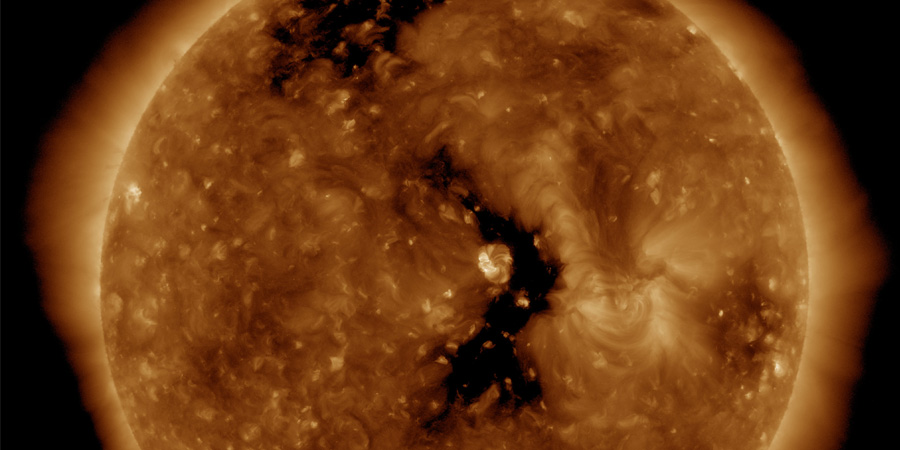Coronal hole faces Earth
Saturday, 8 September 2018 12:36 UTC

A high speed coronal hole solar wind stream arrived at our planet yesterday from a small equatorial coronal hole but it did not produce much geomagnetic activity here on our planet. While the solar wind speed increased to above 500km/s, the north-south direction of the IMF stayed mostly northward and little geomagnetic activity was observed. The Kp-index never increased above Kp2 yesterday. However, we are soon getting another chance for some nice auroral displays as yet another coronal hole faced our planet yesterday.
Our automated coronal hole detection system did its job and an alert was posted on Twitter and as a push alert:
A transequatorial coronal hole is facing Earth. Enhanced solar wind could arrive in ~3 days. Follow live on https://t.co/bsXLidnzGh pic.twitter.com/yrSDWlAw8k
— SpaceWeatherLive (@_SpaceWeather_) September 7, 2018
Facing our planet yesterday was a southern extension of the northern hemisphere polar coronal hole stretching all the way to the solar equator. Compared to the previous rotation, this coronal hole increased slightly in size. Last time around, this solar wind stream caused active geomagnetic conditions which stands for a Kp of 4.
This coronal hole solar wind stream is likely to arrive at our planet on 10 September and once again, active geomagnetic (Kp4) conditions are possible.
Thank you for reading this article! Did you have any trouble with the technical terms used in this article? Our help section is the place to be where you can find in-depth articles, a FAQ and a list with common abbreviations. Still puzzled? Just post on our forum where we will help you the best we can!
Latest news
Latest forum messages
Support SpaceWeatherLive.com!
A lot of people come to SpaceWeatherLive to follow the Sun's activity or if there is aurora to be seen, but with more traffic comes higher server costs. Consider a donation if you enjoy SpaceWeatherLive so we can keep the website online!

Space weather facts
| Last X-flare | 2025/03/28 | X1.1 |
| Last M-flare | 2025/04/01 | M2.5 |
| Last geomagnetic storm | 2025/03/27 | Kp5 (G1) |
| Spotless days | |
|---|---|
| Last spotless day | 2022/06/08 |
| Monthly mean Sunspot Number | |
|---|---|
| February 2025 | 154.6 +17.6 |
| April 2025 | 152.5 -2.1 |
| Last 30 days | 130.7 -17.9 |


